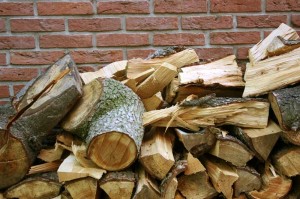In order for your chimney to work, to vent the toxic gases in fireplace combustibles, it has to draw air up and out. Imagine trying to drink through a straw with lots of little cracks in it. That is what your chimney is doing when its liner is damaged. Heated air leaks through it it as surely as that soda is making a mess, and a lot never makes it up the straw.
When Does a Chimney Liner Need to be Replaced?
Chimney liners have come a long way, but many of those that were installed in older homes may be due for replacement. A liner needs to be replaced when it is no longer providing an unbroken surface for air to move across. In reaction to a chimney fire, the clay tiles used to line older masonry fireplaces can let heated air slip through newly formed cracks.
This means not only dangerous gases left indoors, but the transfer of heat through the chimney walls to your own. Preventing that was the reason for using terra cotta to line the chimney, because clay provides an excellent heat barrier. When the tiles crack after a chimney fire, however, the protections that the chimney is intended to provide crack with them.
Clean the Chimney, One Way or the Other
The need to avoid even small chimney fires makes it especially important for homeowners with clay tile liners to keep the chimney unobstructed and clean. Removal of nests, debris, and creosote can be handled by a certified chimney sweep, but they all need to be taken care of rather than put off. If a preventable chimney fire can be avoided, the chimney liner should prevent the kind of chimney fire that is not within your control.
If it is too late and your chimney liner has already cracked, you need to have your chimney professionally inspected before anything else. Then you can choose among different options, although repair is not likely to be among them. Given the difficulty of repairing cracked flue tiles inside a chimney, replacing the liner altogether usually makes more sense. Either way, the chimney has to be cleaned by a certified sweep, so hopefully, it is not too late to save your liner.

